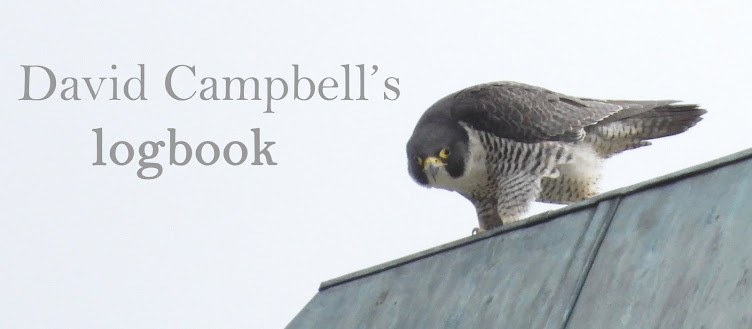This May was not a spectacular month at the patch but it wasn't particularly dire either, with a handful of good local birds to be had. This is the first in what might become a monthly summation of the CFBW Bird Group's collective recording efforts in terms of the local birds.
The month started with a Whinchat on the 1st and further singles were recorded on the 3rd, 4th, 8th and 12th with a pair on the 6th - this continues a strong spring passage for this species. Wheatear on the other hand was less strongly represented in comparison to previous Mays, being recorded on 14 dates, the last being the 16th. 3 was the highest number recorded, this being logged on both the 4th and 6th. Yellow Wagtail was recorded on only one date, the 5th, but at least this single bird showed to a number of participants of the Banstead Arts Festival Migration Tour. A female Common Redstart on the 12th was interesting for its lateness. All of these passerine migrants were at the farm.
Red Kites were seen on 8 dates, including 4 on the 25th, while single Hobbies were seen on the 3rd and 19th. The raptor that stole the show, however, was Hen Harrier, and not just one, but two! A high-flying ringtail was photographed over the Canons Farm/Banstead Woods border on the 6th but better was a lower male that passed west then south over the farm on the 28th. A Peregrine, a rather scarce species this year, flew high over the farm on the 6th.
A Curlew that flew over the farm on the 4th was notable, this species averaging only one sighting annually at CFBW. Perhaps worryingly, no other waders were reported, not even Lapwing. The star bird of the month was an adult Kittiwake that flew very high south-west on the 31st, representing a first for CFBW.
A Garden Warbler was found at The Scrub on the 10th and was last seen on the 17th. Thus far the only bird this year at the patch, this unobtrustive species has proved very difficult to catch up with. Almost as scarce has been Lesser Whitethroat; singing males were at Slangs from the 4th to the 7th and at Valley Meadows from the 19th to 26th. 2 Willow Warblers continued to hold territory at The Scrub while Common Whitethroat, Chiffchaff and Blackcap were present at reasonable density.
Single Cormorants flew over on 6 dates while Mallards still occasionally flew over the recording area and visited Piddly Pond from time to time, with a pair mating there on the 13th. Grey Herons often flew over. A pair of Red-legged Partridges, one of which was presumably the long-staying bird named "George", frequented Broadfield. Canada Geese flew over on 4 dates, including 6 on the 26th.
Still no Swallows appeared to have taken up territory while small numbers trickled through. House Martins remained scarce fly-throughs while Common Swifts arrived late (the first being on the 5th) and never reached impressive numbers at all.
A flock of about 10 Crossbills over the farm on the 27th was a good record, following a long spell of no records after over a year of regular appearances by this noisy finch. Woodland birds became harder to detect, with Treecreepers becoming less noticeable and Nuthatches changing habits so much as to render themselves near undetectable. Goldcrests and Bullfinches continued to be scarcer than usual while Coal Tit numbers were still down. Small numbers of Rooks, which had been breeding just outside of the recording area, were sometimes seen feeding in Hither Field.
Yellowhammer territories were seemingly down on previous years, with only 3 singing males noted (recent years have seen around 8). 3 pairs of Skylarks seemed to be nesting while 2-4 Linnet pairs was about average.
